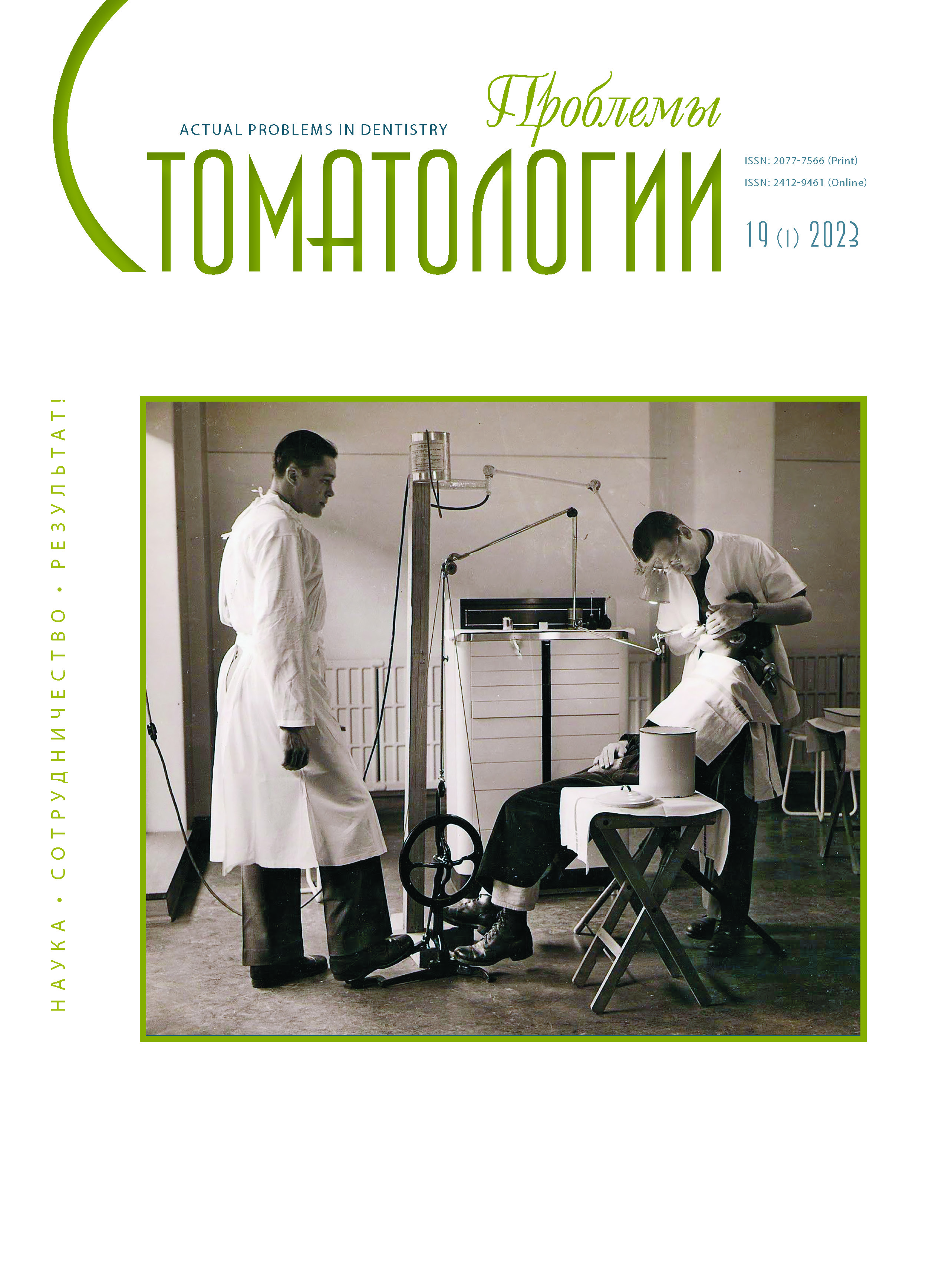Moscow, Moscow, Russian Federation
Moscow, Moscow, Russian Federation
UDC 616
CSCSTI 76.29
Russian Classification of Professions by Education 31.05.03
The subject of the study – temporary tooth eruption syndrome. The aim is to study the frequency of occurrence of temporary tooth eruption syndrome and influence of some factors on its manifestation. Methodology. As part of preventive examinations, 250 children aged from 4 months to 2.5 years, with I and II health groups, who referred with the diagnosis – K00.7 “Teething syndrome” were examined. All medical files of the children were reviewed depending on weight and height parameters, type of feeding, characteristic local and general undesirable manifestations of teething syndrome (ICD-10 K00.7). Results. During the study, 214 (86%) children were diagnosed with temporary tooth eruption syndrome (ICD-10 K00.7). The majority of the children with difficulties of eruption of temporary teeth (93%) had characteristic local and general undesirable manifestations. In 13% of the cases the children had only local symptoms, 4% of the cases had only general manifestations of difficult eruption of temporary teeth. In the course of weight-and-height study, for children with a birth weight less than 2,800 g the incidence of difficulties of eruption of temporary teeth was 94%; children with a birth weight between 2,800 and 3,700 g had a 73% incidence of temporary teeth eruption syndrome; for children with a birth weight of more than 3700 g the incidence was 91%. Studying the effect of the type of feeding on the incidence of difficult temporary teeth eruption, the results showed that the incidence of the syndrome was 68% for children on breastfeeding, 97% for artificially-fed ones, and 97% for mixed-fed infants. Conclusions. A high incidence of temporary tooth eruption syndrome was detected (86%). A correlation between low and high birth weight and the incidence of difficult temporary teeth eruption was found. Considering the effect of the nature of feeding on the incidence of difficult temporary teeth eruption, a high correlation among artificially fed infants, a moderate correlation among mixed-fed infants and weak correlation among breast-fed infants was observed.
temporary tooth eruption syndrome, difficult eruption of temporary teeth, undesirable symptoms of temporary teeth eruption, type of feeding, frequency of occurrence
1. Kazyukova T.V., Radcig E.Yu., Pankratov I.V. Simptomy prorezyvaniya molochnyh zubov i vozmozhnye puti farmakologicheskogo vozdeystviya. RMZh. 2015; 22:1342-1344. [T.V. Kazyukova, E.Yu. Radtsig, I.V. Pankratov. Symptoms of eruption of milk teeth and possible ways of pharmacological action. Breast cancer. 2015;22:1342-1344. (In Russ.)]. https://www.elibrary.ru/item.asp?id=25280880
2. Tighe M. Does a teething child need serious illness excluding? // Arch Dis Child. - 2007:266-273. doi:https://doi.org/10.1136/adc.2006.110114.
3. Macknin M.L., Piedmonte M., Jacobs J., Skibinski C. Symptoms associated with infant teething: a prospective study // Pediatrics. - 2000:747-752. PMID: 10742315
4. Peretz B., Ram D., Hermida L., Otero M.M. Systemic manifestations during eruption of primary teeth in infants // J Dent Child (Chic). - 2003:170-173. PMID: 14528780
5. Kisel'nikova L.P., Drobot'ko L.N. Prorezyvanie vremennyh zubov u detey. Pediatriya (Pril. k zhurn. Consilium Medicum). 2017;3:70-73. [L.P. Kiselnikova, L.N. Drobotko. Growth of the temporary teeth in children. Pediatrics (Suppl. Consilium Medicum). 2017;3:70-73. (In Russ.)]. https://www.elibrary.ru/item.asp?id=30554531
6. Mahtab Memarpour, Elham Soltanimehr, Taherh Eskandarian. Signs and symptoms associated with primary tooth eruption: a clinical trial of nonpharmacological remedies // BMC Oral Health. - 2015;15:88. DOI:https://doi.org/10.1186/s12903-015-0070-2
7. Borovik T.E., Ladodo K.S., Yacyk G.V. i dr. Nauchno-prakticheskaya programma «Optimizaciya vskarmlivaniya detey pervogo goda zhizni v Rossiyskoy Federacii». Pediatriya. 2008;4:75-79. [T.E. Borovik, K.S. Ladodo, G.V. Yatsyk et al. Scientific and practical program “Optimization of feeding children in the first year of life in the Russian Federation”. Pediatrics. 2008;4:75-79. (In Russ.)]. https://www.elibrary.ru/item.asp?id=16405240
8. Abol'yan L.V., Zubkova N.Z. Sovremennye podhody k grudnomu vskarmlivaniyu rebenka». Medicinskiy nauchno-prakticheskiy portal Lvrach. 2005. [L.V. Abolyan, N.Z. Zubkova. Modern approaches to breastfeeding a child. Medical scientific and practical portal Lvrach. 2005. (In Russ.)]. https://www.lvrach.ru/2005/01/4531961
9. Chetvertnova G.A. Vliyanie estestvennogo i iskusstvennogo vskarmlivaniya na kolonizacionnuyu rezistentnost' polosti rta i sostoyanie chelyustno-licevoy oblasti : avtoref. dis. kand. med. nauk. Volgograd, 2008:25. [G.A. Chetvertnova. The influence of natural and artificial feeding on the colonization resistance of the oral cavity and the state of the maxillofacial region : author. dis. cand. med. Sciences. Volgograd, 2008:25. (In Russ.)]. https://www.elibrary.ru/item.asp?id=15923146
10. Standarty VOZ rosta rebenka, osnovannye na dline tela/roste, vese i vozraste. 2006. [WHO Child Growth Standards Based on Length/Height, Weight and Age. 2006. (In Russ.)]. DOI:https://doi.org/10.1111/j.1651-2227.2006.tb02378.x




















